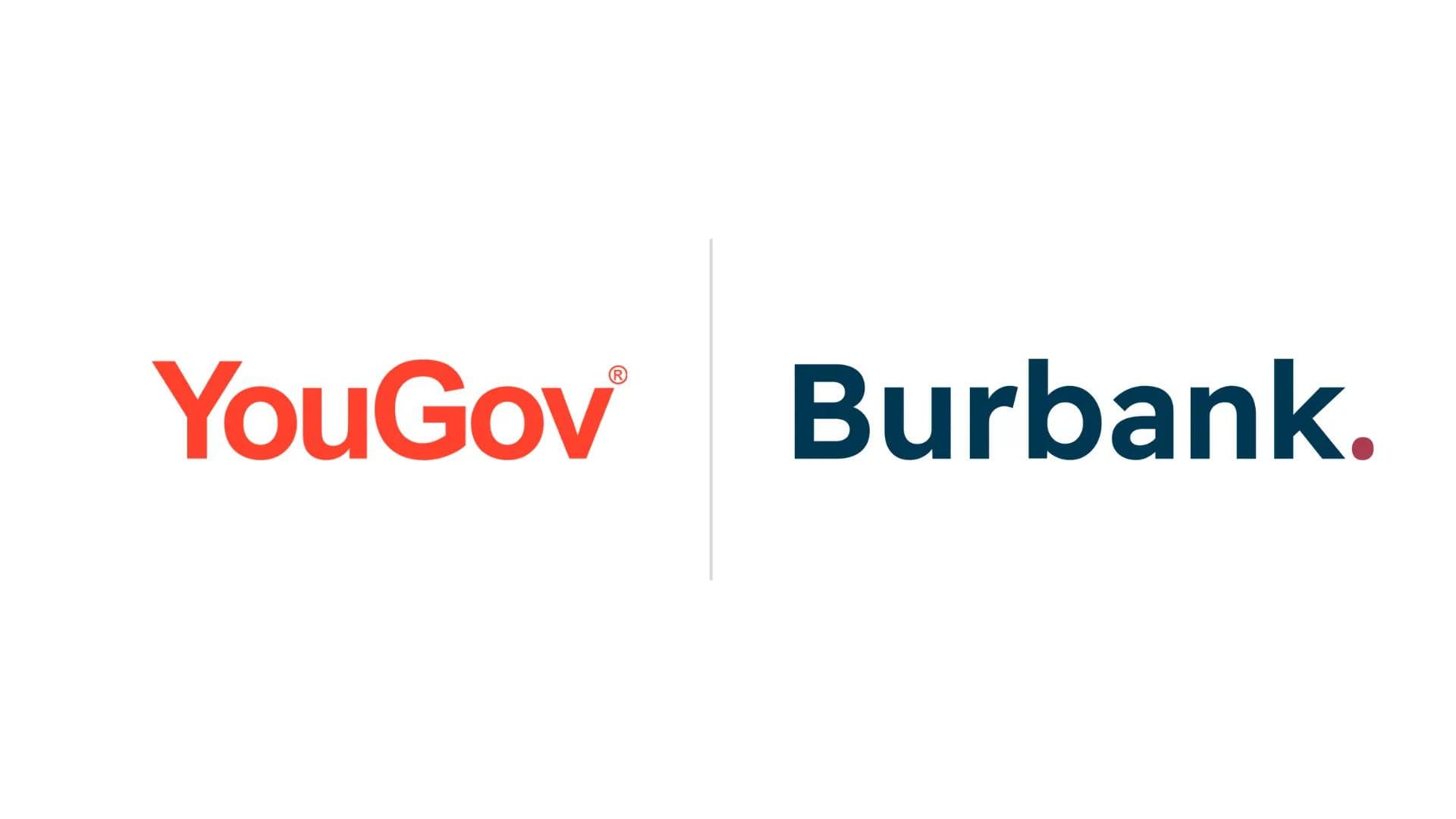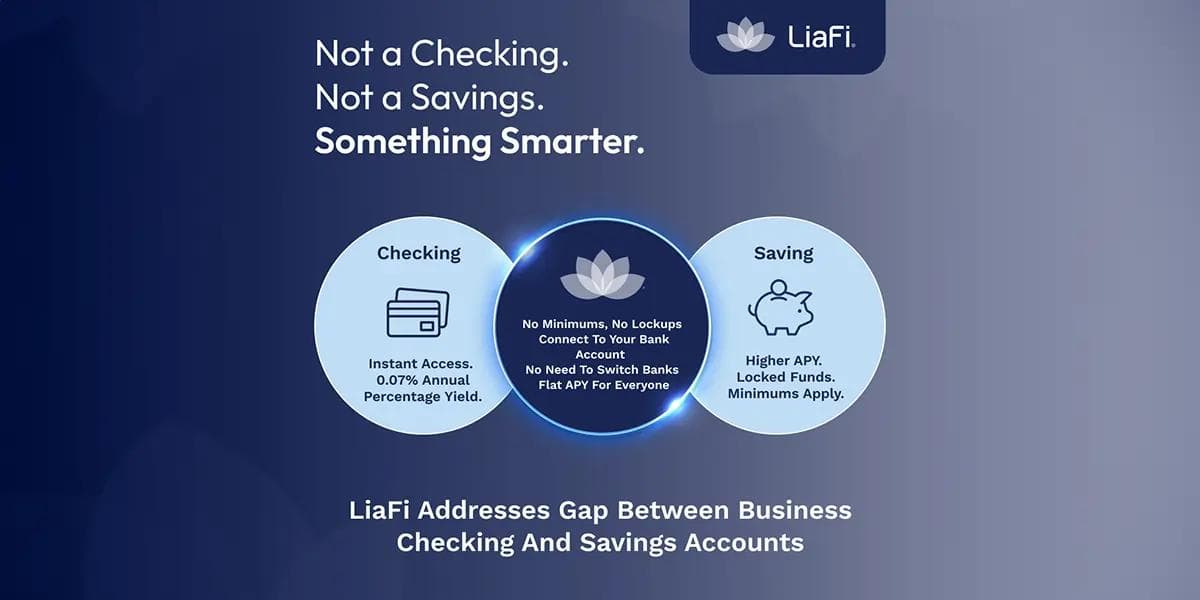Five Strategies for Achieving an Equitable Economy with Digital Finance
Five Strategies for Achieving an Equitable Economy with Digital Finance
Published by Jessica Weisman-Pitts
Posted on October 6, 2021

Published by Jessica Weisman-Pitts
Posted on October 6, 2021

By Ananya Bhattacharyya

Ananya Bhattacharyya
For the estimated 55 million people in the United States who are defined by the Federal Reserve as being unbanked or underbanked, achieving financial equity might seem like an impossible reality. In today’s fast-paced society, where technology continues to advance and impact all aspects of our lives, it can be difficult for those who are disadvantaged to catch up to their peers. When those shortcomings are of a financial nature, the challenges can seem that much more daunting.
The current “digital divide” manifests itself as the discrepancy that exists related to access to technology in the U.S. and globally. It represents many issues related to inequality that are currently a focus of the United Nation’s (UN’s) sustainable development goals (SDGs). A collection of nearly 20 interlinked goals designed to serve as a global “blueprint to achieve a better and more sustainable future,” were set in 2015 by the UN’s General Assembly and are intended to be realized by the year 2030.
At the heart of these goals are e-commerce and the overall digital economy. Within the context of these SDGs, there are five purposeful strategies that businesses in the financial industry can employ and/or advocate for to help their communities achieve more inclusivity. They are:
Those businesses that are willing to incorporate these concepts into their offerings will help the most vulnerable of populations to maintain fair access to digital banking services as the digital economy continues to evolve become increasingly more sophisticated. Helping communities to improve their financial access will require an understanding of the systemic issues that have existed and how technology can be developed and implemented to align with and deliver more equitable solutions.
Rise of open banking
According to a 2018 report by Forbes, more than 1.7 billion people worldwide are excluded from the benefits and entitlements provided by access to a bank account. That’s almost two billion people who aren’t able to make payments other than in cash, lack a convenient savings mechanism, and have no access to fair credit or insurance.
Having a bank account today is still considered to be a privilege. Open banking addresses access and affordability, both of which encourage financial inclusion. It is a practice that enables third-party financial service providers access to data related to consumer banking, transactions and other financial data through application programming interfaces (APIs). The use of private APIs can be an easy way for banks to add value for purposes of increased customer service and subsequent retention. There are, however, opportunities to go further. By offering open APIs in the marketplace, banks can create a revenue-driving ecosystem for fintechs and third-party providers. Some organizations are already enjoying success with this API monetization model and can expect benefits from their early adoption. By developing marketplaces of financial and non-financial services, digital transformation can also be impacted exponentially. Banks can also add value by bundling financial services from third parties with their own products. These are examples of integrated services that banks can monetize through revenue-sharing agreements while improving service quality without increasing costs and complexity of developing the required components and capabilities of these types of services in-house.
Overall, open banking has revolutionized the approach to financial innovation worldwide by allowing institutions to leverage customer data securely while providing access to affordable services, which encourages financial inclusion. According to Ismail Chaib, chief operating officer of the Open Bank Project, an open-source API solution for banks, open banking results in financial inclusion in four distinct ways: “helping the underbanked population to build a financial profile and transaction history; bringing small- and medium-sized companies a larger pool of relevant tools and services; providing apps that help people manage income and improve financial literacy and accessibility; and helping ‘gig workers’ more personalized and affordable financial products.”
Implementation and democratization of data
Data democratization refers to the practice of making relevant data accessible for everyone, from end users and developers to traditional banks and financial institutions. According to a 2021 report by Forbes, democratization of data raises numerous questions and concerns, including: What happens with data within various dashboards? How can thousands of data models be effectively tracked when considering the unpredictability of how frequently new data will be shared when compounded with everyday business challenges? Current guidance suggests the practice of data lineage mapping, which includes tracing of data origins, shares, and any modifications experienced enroute. Lineage mapping helps to ensure data “hygiene” and spotlight any issues or gaps in one’s current DataOps ecosystem.
According to a 2021 report by eConsultancy, the “closing of loops” by not lineage mapping can be the most common error of any data lifecycle. Additionally, Michael Adjei, strategic data advisor based in New York, says that the benefits to lineage mapping for businesses include compliance and auditability, collaboration, and data quality.
Reports of the misuse of personal data have unsurprisingly led consumers to be skeptical of sharing data; however, the democratization of data is empowering for customers and facilitates smart consumer-led products and services. By using account aggregation and payment-initiation technology, banks can now offer users the ability to view balances, make payments, and seek advice through apps, even if their actual accounts are held by other banks. The momentum towards the democratization of data is unlikely to slow down, and the future of finance will look drastically different because of it, including increased transparency, access, and knowledge.
Use of unbiased AI
Unbiased AI occurs when the concepts of equity and properly managed data are combined. That means avoiding algorithms that produce systemically prejudiced results due to erroneous human input and machine learning processes. AI that is biased is especially dangerous to the unbanked and underbanked, as well as those in developing economies that are undergoing political, economic, and social transformation. Because algorithms are created by humans, any historical partiality within an organization can quickly create biased AI that bases decisions on unfair datasets, according to the 2019 report “Fair AI: How to Detect and Remove Bias from Financial Services AI Models.” Biased AI is a pervasive risk to today’s programming that could undermine the entire purpose of digital financial applications and programs. For example, reports stemming from evidence connected to the Home Mortgage Disclosure Act showed that 10.1 percent of Asian applicants were denied a conventional loan compared to 7.9 percent of White applicants and that 19.3 percent of Black borrowers and 13.5 percent of Hispanic borrowers were denied. Posing various questions about an institution’s AI, including whether or not it has enough features to explain minority groups, can help to avoid systematic data bias, says Sray Agarwal, an AI and machine learning specialist based in Boston, MA.
According to Nir Kshetri of the University of North Carolina at Greensboro, AI-based solutions are likely to emerge as a game-changer that have important implications for expanding financial access to disadvantaged and low-income segments of society because traditional banks are reluctant to serve small-scale borrowers due to high transaction costs and inefficient processes associated with making small loans to these borrowers. The use of AI for operational processes among banks and financial institutions in many developing economies has proven to be successful. Chatbots are being used for front-office operations while AI is being deployed in middle-office functions through “know your customer” and anti-money laundering practice. AI is also used to manage risk underwriting for the back office. Moreover, unbiased AI can improve banks’ ability to screen for credit worthiness while tailoring products to the needs of and empowering those at the bottom of the financial pyramid. With voice-over-internet apps and assistants such as Siri, Alexa, and Google Assistant becoming available in vernacular languages, millions will be able to access online education, digital libraries, healthcare, agri-services, entertainment e-commerce, and financial services.
Financial literacy and accessibility
Despite all the concerns posed by the global state of unbanked and underbanked populations, the move to digitalization of banking services today provides an historic opportunity to reset private and public finance to help achieve SDGs. According to Peter J. Morgan of the Asian Development Bank Institute, as digitalization advances, fostering of digital financial literacy and accessibility is likely to become an increasingly important aspect throughout the banking industry. Broadly defined as the capacity to have familiarity with and understanding of the financial marketplace, especially rewards and risks, financial literacy and accessibility also refers to the ability to make informed decisions about the use and management of one’s money. Literature shows problems with financial inclusion and financial literacy between men and women, between urban and rural residents, and between small and large firms, among others. That said, as consumers acquire greater knowledge, they will be better poised to understand the various digital products and how to avoid fraud, which will be paramount in reducing gaps in digital inclusion. Suggested strategies to improve financial literacy and accessibility include targeting disadvantaged groups of individuals and firms to narrow gaps and enable fintechs to contribute to more inclusive financial and economic development, rather than taking a “one-size-fits-all” approach.
Financial inclusion does bring potential dangers, however. Evidence has shown that disadvantaged and low-income people in the microfinance arena have decided to take on loans that they realistically have no capacity to repay. Unless financial literacy and accessibility go hand in hand with financial inclusion, these individuals will get themselves into deeper trouble. Financial education for the community can help to address inequality with topics that range from operating bank accounts to understanding income versus expenditures and long-term planning.
Expansion of credit and debt rehabilitation services
Sometimes, the financial industry’s opportunity to impact their communities in relation to SDGs comes down to ethics and values. In one 2020 report by financial sector specialists Stefan Staschen and Ariadne Plaitakis, the authors claim that the financial services industry has a responsibility to expand access to credit. Such examples include mortgage companies that combine open banking data with more widely used scoring methods to accurately assess what customers can afford, as well as deposit-secured loans to those whose credit histories would make them ineligible for mainstream credit and budget-management and credit-repair seminars. Further, to support debt rehabilitation services, some institutions take data from open banking to build customers’ budgets, identify loans that can be refinanced or consolidated, and negotiate more affordable repayment schedules. “Smart loan repayments” are an example of repayment plans that can consider fluctuations in income during repayment periods by allowing for payments based on available liquidity while avoiding default provisions.
Time to set an example.
Although expanding access to financial services will continue to remain a challenge despite the overall proliferation of digital technology, the tech industry is well positioned to set an example for financial institutions as they strive to better reach and serve unbanked and underbanked populations. In collaboration, they share a high-level of accountability, commitment to service, training, education, oversight and transparency that represent a moral imperative and alignment with the UN’s SDGs to support the potential for a more equitable economic future.
About the Author:
Ananya Bhattacharyya is an enterprising, process-driven, and globally experienced principal product manager at MasterCard. She has a strong technical and financial services background and continually strives to guide creative vision, organizational change, customer-driven innovation, product transformation and strategic thinking in her professional career. For more information, please email bhattacharyya.ananya@gmail.com or visit www.linkedin.com/in/ananya-bhattacharyya/
By Ananya Bhattacharyya

Ananya Bhattacharyya
For the estimated 55 million people in the United States who are defined by the Federal Reserve as being unbanked or underbanked, achieving financial equity might seem like an impossible reality. In today’s fast-paced society, where technology continues to advance and impact all aspects of our lives, it can be difficult for those who are disadvantaged to catch up to their peers. When those shortcomings are of a financial nature, the challenges can seem that much more daunting.
The current “digital divide” manifests itself as the discrepancy that exists related to access to technology in the U.S. and globally. It represents many issues related to inequality that are currently a focus of the United Nation’s (UN’s) sustainable development goals (SDGs). A collection of nearly 20 interlinked goals designed to serve as a global “blueprint to achieve a better and more sustainable future,” were set in 2015 by the UN’s General Assembly and are intended to be realized by the year 2030.
At the heart of these goals are e-commerce and the overall digital economy. Within the context of these SDGs, there are five purposeful strategies that businesses in the financial industry can employ and/or advocate for to help their communities achieve more inclusivity. They are:
Those businesses that are willing to incorporate these concepts into their offerings will help the most vulnerable of populations to maintain fair access to digital banking services as the digital economy continues to evolve become increasingly more sophisticated. Helping communities to improve their financial access will require an understanding of the systemic issues that have existed and how technology can be developed and implemented to align with and deliver more equitable solutions.
Rise of open banking
According to a 2018 report by Forbes, more than 1.7 billion people worldwide are excluded from the benefits and entitlements provided by access to a bank account. That’s almost two billion people who aren’t able to make payments other than in cash, lack a convenient savings mechanism, and have no access to fair credit or insurance.
Having a bank account today is still considered to be a privilege. Open banking addresses access and affordability, both of which encourage financial inclusion. It is a practice that enables third-party financial service providers access to data related to consumer banking, transactions and other financial data through application programming interfaces (APIs). The use of private APIs can be an easy way for banks to add value for purposes of increased customer service and subsequent retention. There are, however, opportunities to go further. By offering open APIs in the marketplace, banks can create a revenue-driving ecosystem for fintechs and third-party providers. Some organizations are already enjoying success with this API monetization model and can expect benefits from their early adoption. By developing marketplaces of financial and non-financial services, digital transformation can also be impacted exponentially. Banks can also add value by bundling financial services from third parties with their own products. These are examples of integrated services that banks can monetize through revenue-sharing agreements while improving service quality without increasing costs and complexity of developing the required components and capabilities of these types of services in-house.
Overall, open banking has revolutionized the approach to financial innovation worldwide by allowing institutions to leverage customer data securely while providing access to affordable services, which encourages financial inclusion. According to Ismail Chaib, chief operating officer of the Open Bank Project, an open-source API solution for banks, open banking results in financial inclusion in four distinct ways: “helping the underbanked population to build a financial profile and transaction history; bringing small- and medium-sized companies a larger pool of relevant tools and services; providing apps that help people manage income and improve financial literacy and accessibility; and helping ‘gig workers’ more personalized and affordable financial products.”
Implementation and democratization of data
Data democratization refers to the practice of making relevant data accessible for everyone, from end users and developers to traditional banks and financial institutions. According to a 2021 report by Forbes, democratization of data raises numerous questions and concerns, including: What happens with data within various dashboards? How can thousands of data models be effectively tracked when considering the unpredictability of how frequently new data will be shared when compounded with everyday business challenges? Current guidance suggests the practice of data lineage mapping, which includes tracing of data origins, shares, and any modifications experienced enroute. Lineage mapping helps to ensure data “hygiene” and spotlight any issues or gaps in one’s current DataOps ecosystem.
According to a 2021 report by eConsultancy, the “closing of loops” by not lineage mapping can be the most common error of any data lifecycle. Additionally, Michael Adjei, strategic data advisor based in New York, says that the benefits to lineage mapping for businesses include compliance and auditability, collaboration, and data quality.
Reports of the misuse of personal data have unsurprisingly led consumers to be skeptical of sharing data; however, the democratization of data is empowering for customers and facilitates smart consumer-led products and services. By using account aggregation and payment-initiation technology, banks can now offer users the ability to view balances, make payments, and seek advice through apps, even if their actual accounts are held by other banks. The momentum towards the democratization of data is unlikely to slow down, and the future of finance will look drastically different because of it, including increased transparency, access, and knowledge.
Use of unbiased AI
Unbiased AI occurs when the concepts of equity and properly managed data are combined. That means avoiding algorithms that produce systemically prejudiced results due to erroneous human input and machine learning processes. AI that is biased is especially dangerous to the unbanked and underbanked, as well as those in developing economies that are undergoing political, economic, and social transformation. Because algorithms are created by humans, any historical partiality within an organization can quickly create biased AI that bases decisions on unfair datasets, according to the 2019 report “Fair AI: How to Detect and Remove Bias from Financial Services AI Models.” Biased AI is a pervasive risk to today’s programming that could undermine the entire purpose of digital financial applications and programs. For example, reports stemming from evidence connected to the Home Mortgage Disclosure Act showed that 10.1 percent of Asian applicants were denied a conventional loan compared to 7.9 percent of White applicants and that 19.3 percent of Black borrowers and 13.5 percent of Hispanic borrowers were denied. Posing various questions about an institution’s AI, including whether or not it has enough features to explain minority groups, can help to avoid systematic data bias, says Sray Agarwal, an AI and machine learning specialist based in Boston, MA.
According to Nir Kshetri of the University of North Carolina at Greensboro, AI-based solutions are likely to emerge as a game-changer that have important implications for expanding financial access to disadvantaged and low-income segments of society because traditional banks are reluctant to serve small-scale borrowers due to high transaction costs and inefficient processes associated with making small loans to these borrowers. The use of AI for operational processes among banks and financial institutions in many developing economies has proven to be successful. Chatbots are being used for front-office operations while AI is being deployed in middle-office functions through “know your customer” and anti-money laundering practice. AI is also used to manage risk underwriting for the back office. Moreover, unbiased AI can improve banks’ ability to screen for credit worthiness while tailoring products to the needs of and empowering those at the bottom of the financial pyramid. With voice-over-internet apps and assistants such as Siri, Alexa, and Google Assistant becoming available in vernacular languages, millions will be able to access online education, digital libraries, healthcare, agri-services, entertainment e-commerce, and financial services.
Financial literacy and accessibility
Despite all the concerns posed by the global state of unbanked and underbanked populations, the move to digitalization of banking services today provides an historic opportunity to reset private and public finance to help achieve SDGs. According to Peter J. Morgan of the Asian Development Bank Institute, as digitalization advances, fostering of digital financial literacy and accessibility is likely to become an increasingly important aspect throughout the banking industry. Broadly defined as the capacity to have familiarity with and understanding of the financial marketplace, especially rewards and risks, financial literacy and accessibility also refers to the ability to make informed decisions about the use and management of one’s money. Literature shows problems with financial inclusion and financial literacy between men and women, between urban and rural residents, and between small and large firms, among others. That said, as consumers acquire greater knowledge, they will be better poised to understand the various digital products and how to avoid fraud, which will be paramount in reducing gaps in digital inclusion. Suggested strategies to improve financial literacy and accessibility include targeting disadvantaged groups of individuals and firms to narrow gaps and enable fintechs to contribute to more inclusive financial and economic development, rather than taking a “one-size-fits-all” approach.
Financial inclusion does bring potential dangers, however. Evidence has shown that disadvantaged and low-income people in the microfinance arena have decided to take on loans that they realistically have no capacity to repay. Unless financial literacy and accessibility go hand in hand with financial inclusion, these individuals will get themselves into deeper trouble. Financial education for the community can help to address inequality with topics that range from operating bank accounts to understanding income versus expenditures and long-term planning.
Expansion of credit and debt rehabilitation services
Sometimes, the financial industry’s opportunity to impact their communities in relation to SDGs comes down to ethics and values. In one 2020 report by financial sector specialists Stefan Staschen and Ariadne Plaitakis, the authors claim that the financial services industry has a responsibility to expand access to credit. Such examples include mortgage companies that combine open banking data with more widely used scoring methods to accurately assess what customers can afford, as well as deposit-secured loans to those whose credit histories would make them ineligible for mainstream credit and budget-management and credit-repair seminars. Further, to support debt rehabilitation services, some institutions take data from open banking to build customers’ budgets, identify loans that can be refinanced or consolidated, and negotiate more affordable repayment schedules. “Smart loan repayments” are an example of repayment plans that can consider fluctuations in income during repayment periods by allowing for payments based on available liquidity while avoiding default provisions.
Time to set an example.
Although expanding access to financial services will continue to remain a challenge despite the overall proliferation of digital technology, the tech industry is well positioned to set an example for financial institutions as they strive to better reach and serve unbanked and underbanked populations. In collaboration, they share a high-level of accountability, commitment to service, training, education, oversight and transparency that represent a moral imperative and alignment with the UN’s SDGs to support the potential for a more equitable economic future.
About the Author:
Ananya Bhattacharyya is an enterprising, process-driven, and globally experienced principal product manager at MasterCard. She has a strong technical and financial services background and continually strives to guide creative vision, organizational change, customer-driven innovation, product transformation and strategic thinking in her professional career. For more information, please email bhattacharyya.ananya@gmail.com or visit www.linkedin.com/in/ananya-bhattacharyya/
Explore more articles in the Top Stories category











